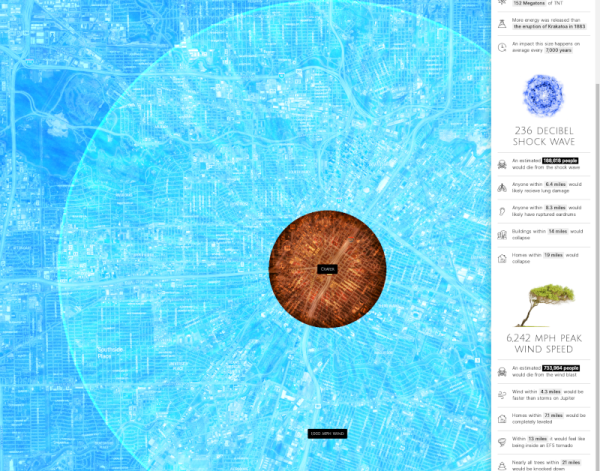How long does it take a team of rocket scientists to remove two screws? When the screws they’re working on are keeping a priceless sample of asteroid safe, it’s about three months. That’s how long NASA has been working on the OSIRIS-REx sample return canister, which came back to Earth from asteroid Bennu back in September. The container was crammed full of asteroid bits, thanks in part to an overly energetic impact between the sample-collecting boom and Bennu. There was so much stuff that planetary scientists were able to recover about 70 grams of material that was covering the outside of the sealed container; this must have been a boon to the engineers, who got to figure out how to open the jammed cover of the container without anyone breathing down their necks for samples to study. The problem was a pair of stuck fasteners out of the 35 holding the lid on the container; the solution was far more complicated than a spritz of WD-40 and a little bit of heating with an oxy-acetylene torch. Engineers had to design two “clamp-like tools” and test them on a mock-up to make sure they wouldn’t contaminate the sample. We’d love to know more about these tools; trust us, we’ll be looking into this closely. If we find anything, a full article will be forthcoming.
asteroid25 Articles
NASA Blames Probe Chute Failure On Wire Labels
When NASA’s OSIRIS-REx sample return capsule screamed its way through the upper atmosphere, it marked the first time the space agency had brought material from an asteroid back to Earth. Hundreds of thousands tuned into the September 24th live stream so they could watch the capsule land at the Utah Test and Training Range. But about ten minutes before the capsule was set to touchdown, keen eyed viewers may have noticed something a bit odd — when ground control called out that the vehicle’s drogue parachute was commanded to deploy…nothing seemed to happen.
Now NASA knows why it didn’t work as expected, and it ended up being the sort of Earthly problem that we’d wager a few in this audience have run into themselves from time to time.
Continue reading “NASA Blames Probe Chute Failure On Wire Labels”
Hackaday Links: October 8, 2023
Too much of a good thing is generally a bad thing, but a surfeit of asteroid material is probably a valid exception to that rule. Such was NASA’s plight as it started to unpack the sample return capsule recently dropped off by the OSIRIS-REx spacecraft as it flew by Earth, only to discover it was packed to overflowing with samples of asteroid Bennu. The spacecraft, which arrived at Bennu in 2018 and spent a good long time mapping the near-Earth asteroid, apparently approached its carefully selected landing site a bit too energetically and really packed the sample container full of BennuBits™ — so much so that they could actually see sample shedding off into space before stowing it for the long trip back to Earth. The container is now safely in the hands of the sample analysis team, who noted that everything in the TAGSAM (Touch and Go Sample Acquisition Module), even the avionics deck, is covered with black particles, each precious one of which needs to be collected and cataloged. The black stuff is especially interesting to planetary scientists, as it might be exactly what they were after when they selected Bennu, which may have broken off a much larger carbon-rich asteroid a billion or so years ago. It’ll be interesting to see if these interplanetary hitchhikers have anything to tell us about the origin of life in the solar system.
Hackaday Links: March 12, 2023
With a long history of nearly universal hate for their products, you’d think printer manufacturers would by now have found ways to back off from the policies that only seem to keep aggravating customers. But rather than make it a financially wiser decision to throw out a printer and buy a new one than to buy new ink cartridges or toners, manufacturers keep coming up with new and devious ways to piss customers off. Case in point: Hewlett-Packard now seems to be bricking printers with third-party ink cartridges. Reports from users say that a new error message has popped up on screens of printers with non-HP cartridges installed warning that further use of the printer has been blocked. Previously, printers just warned about potential quality issues from non-HP consumables, but now they’re essentially bricked until you cough up the money for legit HP cartridges. Users who have contacted HP support say that they were told the change occurred because of a recent firmware update sent to the printer, so that’s comforting.
In My Neighborhood, We Played Asteroids…with Real Asteroids
There was a comedian in the 1980s who always said he grew up in a tough neighborhood. He claimed they played cops and robbers with real cops. They played gin rummy with real gin. Well, maybe if he knew about [Neal Agarwal]’s asteroid launcher simulation website, he would have said they played asteroids with real asteroids.
If you ever wondered what would happen if a 1,500-foot stone or iron asteroid hit your hometown going at 38,000 mph, now you can find out. Apparently, I live far enough in the suburbs that even a 1 mile-wide iron asteroid hitting the center of Houston wouldn’t put a crater under my house. The 17-mile-wide and 2,608-foot-deep crater would release the equivalent of 399 Gigatons of TNT, but it wouldn’t reach me.
The 29-mile-wide fireball would be a different story. Oh, and the 244 dB shockwave would almost certainly reach me. So if the clothes catching on fire resulting in second- and third-degree burns didn’t get me, perhaps the shockwave would. The simulation says that zone will have 99% fatalities, and even further out, people will get severe lung damage. Eardrums burst even further away. Homes would collapse almost to the Mexican border.
The 1,000-mile-per-hour wind might present problems, too. While we are well-situated for hurricanes in this area, that’s about five times more wind than even a big hurricane generates. And we are not well prepared for earthquakes, much less the magnitude 70 quake that would occur.
Pretty bleak. On the plus side, a strike like that happens about once every 2.6 million years. If you try it yourself, be sure to scroll down the right panel to see the graphical representation of the different effects.
Maybe NASA is on to something when they tell us they want to learn to deflect asteroids. Even private foundations are getting into the business of finding them.
Watch NASA Crash A Probe Into An Asteroid Tonight
Got any plans for tonight? No? Well then you’re in luck, because NASA is just a few hours from intentionally smashing a probe into the minor planet Dimorphos as part of Double Asteroid Redirection Test (DART) — marking the first time humanity has ever intentionally tried to knock a space rock off-course. If it works, we’re one step closer to having a viable planetary defense system in case we ever detect an asteroid on a collision course with Earth. If it doesn’t work. . . well, we’ve still got time to come up with another plan.
To be clear, the 170 meter (560 feet) wide Dimorphos DOES NOT pose any threat to us, nor will it after NASA smacks it around with an ion-propelled spacecraft. This is simply a test to see if a small spacecraft impacting an asteroid head-on can slow it down enough to appreciably change its orbital trajectory. We won’t know for a week or so if the impact did the trick, but it should still be fascinating to watch the crash happen live.
We’ve embedded the two NASA streams below. The first one will start about a half an hour before impact and is going to show live navigational images of Dimorphos as the DART spacecraft zeros in on its target, and the second stream will cover the main event. Keep in mind this isn’t a Hollywood film we’re talking about — don’t expect any dramatic explosions when the clock hits zero. When the telemetry stops coming back, that means it was a bullseye.
Continue reading “Watch NASA Crash A Probe Into An Asteroid Tonight”
Keep Tabs On Asteroids With Asteroid Atlas
Keeping tabs on the night sky is an enjoyable way to stay connected to the stars, and astronomy can be accessible to most people with a low entry point for DIY telescopes. For those who live in areas with too much light pollution, though, cost is not the only issue facing amateur astronomers. Luckily there are more ways to observe the night sky, like with this open source software package from [elanorlutz] which keeps tabs on all known asteroids.
The software is largely based on Python and uses a number of databases from NASA to allow anyone with a computer to explore various maps of the solar system and the planetary and non-planetary bodies within it. Various trajectories can be calculated, and paths of other solar system bodies can be shown with respect to an observer in various locations. Once the calculations are made in Python it is able to export the images for use in whichever image manipulation software you prefer.
The code that [elanorlutz] has created is quite extensive and ready to use for anyone interested in tracking comets, trans-Neptunian objects, or even planets and moons from their own computer. We would imagine a tool like this would be handy for anyone with a telescope as well as it could predict locations of objects in the night sky with accuracy and then track them with the right hardware.















